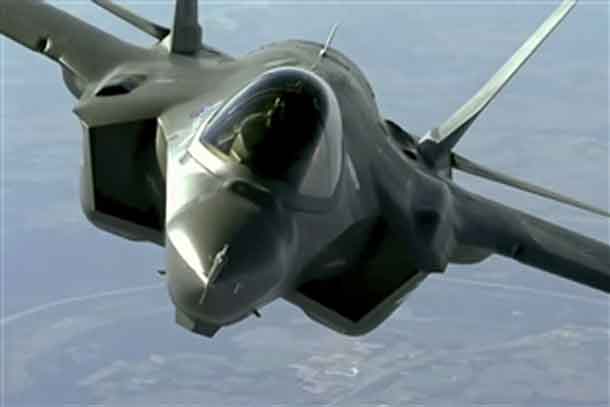
WASHINGTON — The chief of the F-35 program detailed “the good, the bad and the ugly” aspects of the Joint Strike Fighter during testimony before the House Armed Services Subcommittee on Tactical Air and Land Forces yesterday.
Air Force Lt. Gen. Christopher C. Bogdan said that overall the once-troubled fighter is “executing fairly well across the entire spectrum of acquisition to include development and design, flight test, production, fielding, base stand-up, maintenance and support and building a global sustainment enterprise.”
The F-35 program is at a pivot point and is changing and accelerating, the general said. The development portion of the aircraft will end late next year and will transition to a modernization program.
Anticipated Production Amps Up
Production will grow from 45 aircraft in 2015 to more than 100 aircraft in 2018 and up to 145 aircraft per year by 2020, Bogdan said. The program office will continue standing up 17 operating bases globally and developing the supply system to keep them all flying, he said.
Still, it is a complex program, not without its troubles, Bogdan said. “I’ve often said that the mark of a good program is not that it has no problems, but that it discovers problems, implements solutions, improves the weapon system and at the same time keeps the program on track,” he said.
The Air Force is now receiving F-35As at Hill Air Force Base, Utah. Training is underway and the service should have its first combat-coded squadron this year, the general said.
The Marine Corps is flying the F-35B from austere air bases and is dropping and shooting live weapons, the general said.
To date, he said, 172 aircraft have been delivered to test, operational and training sites.
“On the cost front, the cost of an F-35 continues to decline steadily lot over lot,” Bogdan said. “This is a trend that will continue for many years. I expect the cost of an F-35 with an engine to decrease from about $108 million this year to about $85 million in 2019.”
He added, “The program is moving forward — sometimes slower than I’d like — but moving forward and making progress nonetheless.”
